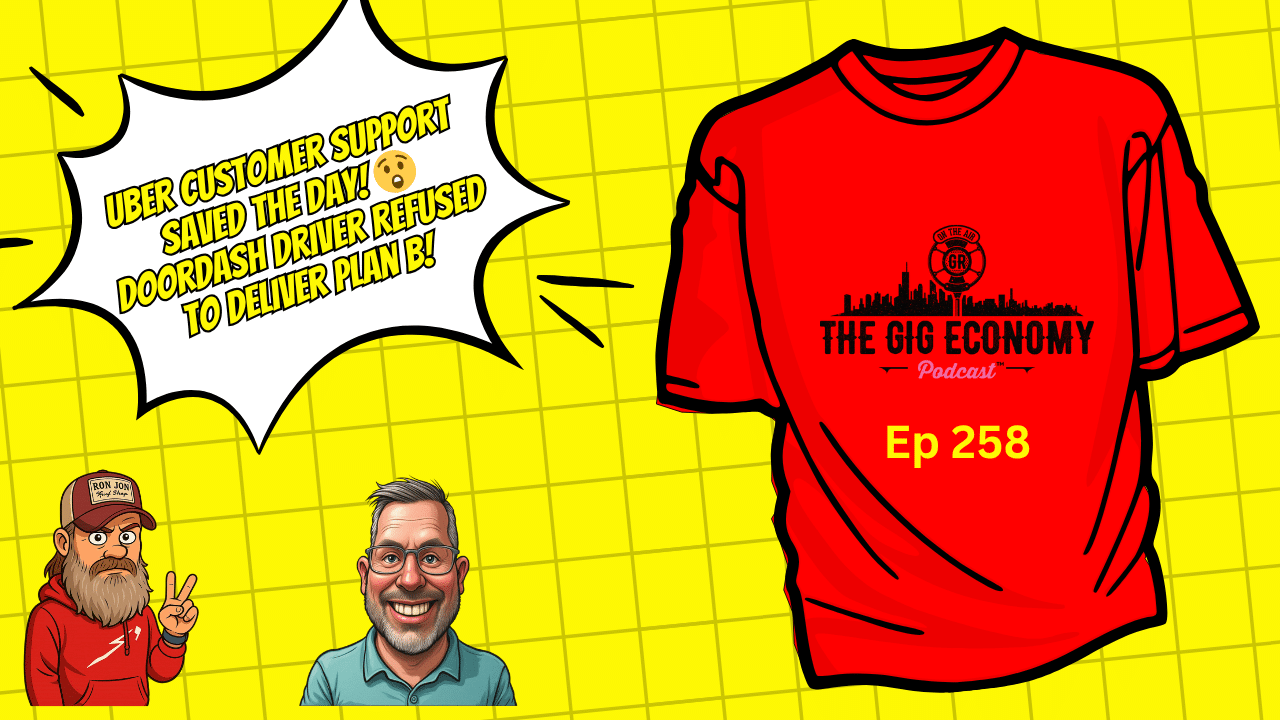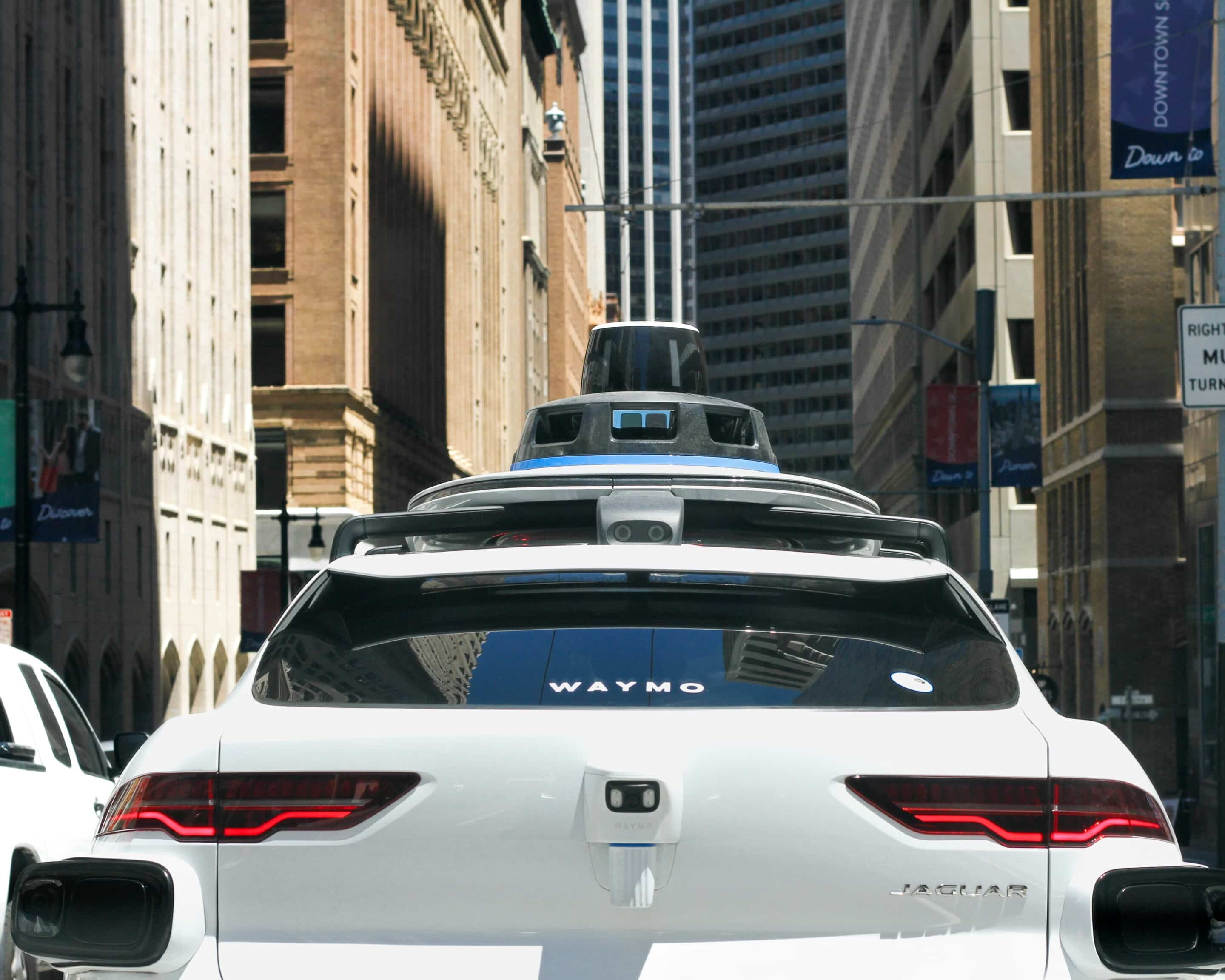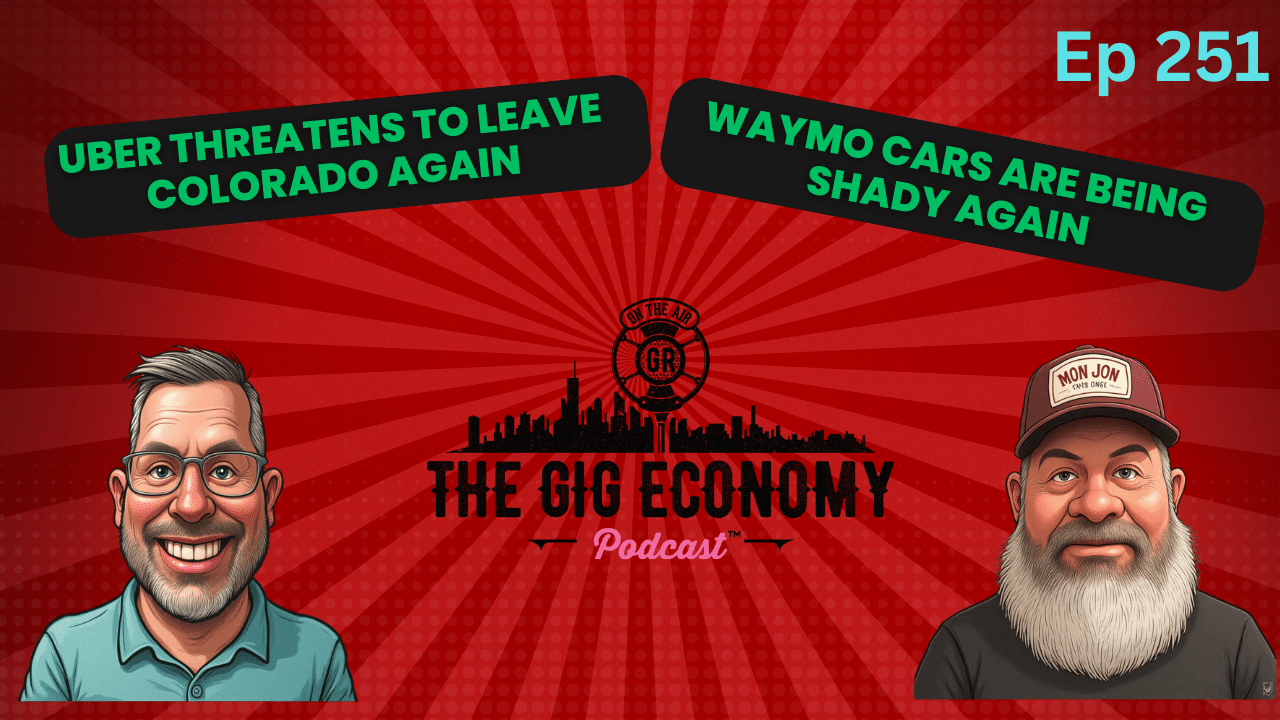
by Jason Tieri | Jul 6, 2025 | Blog
Nashville adventures, dirty Uber cars, and customer service nightmares – the latest episode of the Gig Economy Podcast covered it all as the hosts returned from their meetup in Tennessee. What began as a casual gathering of podcast hosts and listeners quickly transformed into a weekend filled with gambling, games, and gig economy insights from the trenches.
The Nashville getaway featured a surprising amount of gambling on unexpected things – from a plastic horse racing game that had the group betting $5 per race to a crocodile tooth app game at a local bar. As one host admitted, “Jason was on fire Saturday night” when it came to the horse racing game, clearing about $100 over the weekend at $5 per match. The mini-vacation served as both entertainment and a reminder of how gig workers create community despite the independent nature of their work.
Upon returning to their respective cities, the podcast delved into several significant developments in the gig economy landscape. Most notably, the New York Taxi Commission has voted unanimously to restrict the controversial driver “lockouts” that Uber and Lyft had been implementing. Under new amendments, rideshare companies must now provide at least 72 hours’ notice to affected drivers before locking them out, and cannot lock out drivers for at least 16 hours once they start accepting trips. This represents a significant win for New York drivers who had been dealing with arbitrary lockouts that severely limited their ability to earn.
The episode also covered the expanding presence of automated services in the gig economy. Atlanta has become the fourth city to implement robot deliveries for Uber Eats, joining Los Angeles, Miami, and Dallas-Fort Worth. Orders from select restaurants, including Real Tacos, Ponco Chicken, and Shake Shack, can now be delivered by small autonomous robots that can travel up to four miles per hour with a 48-mile range. This advancement signals yet another step toward automation in an industry that currently provides income for millions of human workers.
Customer service issues took center stage as the hosts shared both personal experiences and viral stories. A particularly telling video contrasted Uber Eats’ customer service when the platform first launched (extremely accommodating with generous refunds and credits) versus the current state (unhelpful and dismissive). This decline in customer service quality parallels what many gig workers have experienced with declining pay over time – as platforms mature, both worker compensation and customer service seem to deteriorate.
Perhaps the most alarming story involved an imposter Uber driver in Fort Lauderdale who nearly got away with having his passenger drive through a security checkpoint. The driver, who was using someone else’s account, claimed he had forgotten his ID and convinced his passenger to switch seats before reaching a port security checkpoint where IDs were required. When police discovered the deception, the driver was arrested, and the passenger was left stranded, with Uber initially refusing to refund the ride until media inquiries pressured them to do so.
The episode concluded with a discussion of direct negotiation between passengers and drivers to circumvent app fees. While some customers are offering to pay drivers directly in cash – often at a price point that benefits both parties while cutting out the middleman, the hosts emphasized that such arrangements come with serious risks, particularly regarding insurance coverage in the event of an accident. Despite the temptation of immediate higher pay, they cautioned against making this a regular practice.

by Jason Tieri | Jun 22, 2025 | Blog
The gig economy landscape continues to evolve with technological advancements pushing boundaries while human workers adapt to ever-changing market conditions. A recent exploration of these dynamics revealed fascinating insights about both autonomous vehicles and the resilience of traditional gig workers.
The conversation around Waymo, Alphabet’s self-driving car service, highlights a surprising consumer behavior pattern. Despite charging approximately $10 more per ride than traditional rideshare services like Uber and Lyft, Waymo is finding that customers are willing to pay the premium for driverless experiences. The average price for Waymo rides ($2,043) substantially exceeds both Lyft ($1,558) and Uber ($1,440), yet the company reported providing 250,000 rides in May alone. This phenomenon speaks to both the novelty factor of autonomous vehicles and perhaps a segment of consumers who prefer not interacting with human drivers. However, the long-term sustainability of this price premium remains questionable once the novelty effect diminishes, especially considering the substantial infrastructure and technology costs behind operating autonomous fleets.
Safety concerns with autonomous vehicles were starkly illustrated by footage of a Waymo vehicle freezing in the path of emergency vehicles. Unlike human drivers who intuitively understand to pull over for emergency responders, the Waymo vehicle stopped in place, potentially creating dangerous delays for first responders heading to critical situations. This incident illuminates the continuing challenges in programming AI to handle complex, nuanced traffic situations where human judgment and adaptability remain superior.
The human side of the gig economy reveals both challenges and heartwarming stories. One experienced DoorDash driver with mobility issues received unexpected support when a customer started a GoFundMe that raised over $21,000 after observing his positive attitude despite physical limitations. This highlights not only the power of community support but also how gig platforms provide crucial income opportunities for individuals who might face barriers in traditional employment, particularly older workers who may struggle to find conventional jobs but can thrive in the flexible gig economy environment.
Statistics shared during the discussion reveal surprising demographics within the gig workforce: approximately 50% of DoorDash drivers are women, challenging common assumptions about the gender makeup of delivery professionals. Additionally, only about 8% of gig workers operate full-time, with the vast majority (92%) using these platforms as supplemental income sources. This reinforces the understanding of gig work primarily as a side hustle rather than career-sustaining employment for most participants.
The discussion of various platforms – from Market Wagon (a farm-to-table delivery service) to Amazon Flex and Roadie – demonstrates the diversification strategies gig workers employ to maximize earnings and stability. Each platform offers different advantages: some provide guaranteed pay and simplicity, while others offer potentially higher earnings with greater variability. Experienced gig workers navigate this ecosystem by strategically combining platforms based on market conditions, personal preferences, and financial goals.
Technology integration continues across the gig economy spectrum, with Instacart announcing a partnership with Pinterest to create new retail media opportunities. This collaboration exemplifies how platforms seek to expand their reach and convenience factors, recognizing that today’s consumers value streamlined, frictionless experiences. The future likely holds more such integrations as companies compete for consumer attention and spending.

by Jason Tieri | Jun 15, 2025 | Blog
The gig economy continues to evolve at a rapid pace, bringing both opportunities and challenges for workers and consumers alike. In this latest episode, we delve into several fascinating developments that highlight the changing landscape of delivery services and ridesharing.
One of the most significant advancements we discussed is Walmart’s partnership with Wing, a drone delivery service owned by Alphabet (Google’s parent company). This collaboration is expanding to 100 new stores across Atlanta, Charlotte, Houston, Orlando, and Tampa. These drones aren’t your average hobbyist flyers – they cruise at an impressive 65 mph and can carry up to five pounds of merchandise, with newer models potentially doubling that capacity. Perhaps most impressive is their ability to complete a 12-mile round trip on a single charge and their new capability to handle multiple deliveries without returning to base, thanks to innovative auto-loader stations installed in retailer parking lots. This represents a significant leap forward in last-mile delivery solutions that could potentially reshape how we receive packages in the near future.
The human element of delivery services remains complex, as evidenced by several stories we shared. One viral video showed a delivery driver adjusting himself inappropriately while dropping off food, captured on a customer’s Ring doorbell camera. While the driver wasn’t touching the food directly, the incident raises questions about professionalism and customer perception in the gig economy. It’s a reminder that in an era of ubiquitous surveillance, drivers must maintain awareness of their behavior at all times, as actions that might have gone unnoticed in the past are now frequently captured and shared online.
We also discussed a particularly amusing incident involving one of our listeners, Faith, who works for Amazon Flex and Walmart Spark in the Las Vegas area. She encountered a customer with very specific delivery instructions referencing a “red fire hydrant” as a landmark. When Faith discovered the hydrant was actually yellow, she decided to correct the customer by leaving a note on their package. This small act of defiance resonated with many drivers who have experienced the frustration of dealing with outdated or inaccurate delivery instructions from occasionally demanding customers.
The episode also touched on the challenges of alcohol deliveries, which require special certification and present unique complications. Unlike regular food deliveries, alcohol orders cannot be left unattended – the driver must verify the customer’s ID in person. This creates particular challenges when customers aren’t home or available to receive their orders, forcing drivers to return items to the store without completion. The time and fuel wasted on these incomplete deliveries can significantly impact a driver’s earnings and efficiency.
Communication barriers in the gig economy were highlighted through a video featuring a non-verbal delivery driver who communicated exclusively through gestures and grunts. While there might be various explanations for this behavior, including potential language barriers, the incident underscores the importance of basic communication skills in service-oriented roles, particularly when coordination with restaurant staff and customers is essential.
As the gig economy continues to advance technologically while still relying heavily on human workers, these stories illustrate the ongoing tension between automation and personal service, between efficiency and the unpredictability of human behavior. Whether it’s drone deliveries revolutionizing logistics or the sometimes awkward human interactions that define our current system, the landscape of delivery and ridesharing services continues to provide a fascinating window into how technology and humanity intersect in our daily lives.

by Jason Tieri | May 27, 2025 | Podcasts
Everything Gig Economy Podcast Related: https://gigeconomyshow.com/
Download the Audio Podcast: https://thegigeconomypodcast.buzzsprout.com
Love the show? You now have the opportunity to support the show with some great rewards by becoming a Patron. Tier #2 we offer free merch, an Extra in-depth podcast per month, and an NSFW pre-show https://www.patreon.com/thegigeconpodcast
Newsletter link: https://bit.ly/gigeconomynewsletter
Dovetail is a new way to make money by submitting your earnings and getting CASH. Sign up at https://rebrand.ly/DOVETAILCASH and use the code 0AE397D8, and we both get 10.00!
Octopus is a mobile entertainment tablet for your riders. Earn 100.00 per month for having the tablet in your car! No cost for the driver!
https://playoctopus.page.link/HD2FBKJzFqRR35YE9
Want to earn more and stay safe? Download Maxymo https://middletontech.com/gigeconomypodcast
Community Facebook Group: https://www.facebook.com/groups/451789943399295/
The Gig Economy Podcast Group Download Telegram 1st, then click on the link to join. https://t.me/joinchat/R42wUR2QGhCi2gBD
TikTok: https://www.tiktok.com/@gigeconomypodcast?
Subscribe on Youtube https://www.youtube.com/channel/UCK_bV7j7o1BzWtB4mt_4R8Q?view_as=subscriber
This podcast is produced by Hey Guys Media Group LLC http://www.heyguysmediagroup.com
Want to start your own podcast? Reach out to them today!

by Jason Tieri | May 23, 2025 | Podcasts
Everything Gig Economy Podcast Related: https://gigeconomyshow.com/
Download the Audio Podcast: https://thegigeconomypodcast.buzzsprout.com
Love the show? You now have the opportunity to support the show with some great rewards by becoming a Patron. Tier #2 we offer free merch, an Extra in-depth podcast per month, and an NSFW pre-show https://www.patreon.com/thegigeconpodcast
Newsletter link: https://bit.ly/gigeconomynewsletter
Dovetail is a new way to make money by submitting your earnings and getting CASH. Sign up at https://rebrand.ly/DOVETAILCASH and use the code 0AE397D8, and we both get 10.00!
Octopus is a mobile entertainment tablet for your riders. Earn 100.00 per month for having the tablet in your car! No cost for the driver!
https://playoctopus.page.link/HD2FBKJzFqRR35YE9
Want to earn more and stay safe? Download Maxymo https://middletontech.com/gigeconomypodcast
Community Facebook Group: https://www.facebook.com/groups/451789943399295/
The Gig Economy Podcast Group Download Telegram 1st, then click on the link to join. https://t.me/joinchat/R42wUR2QGhCi2gBD
TikTok: https://www.tiktok.com/@gigeconomypodcast?
Subscribe on Youtube https://www.youtube.com/channel/UCK_bV7j7o1BzWtB4mt_4R8Q?view_as=subscriber
This podcast is produced by Hey Guys Media Group LLC http://www.heyguysmediagroup.com
Want to start your own podcast? Reach out to them today!





